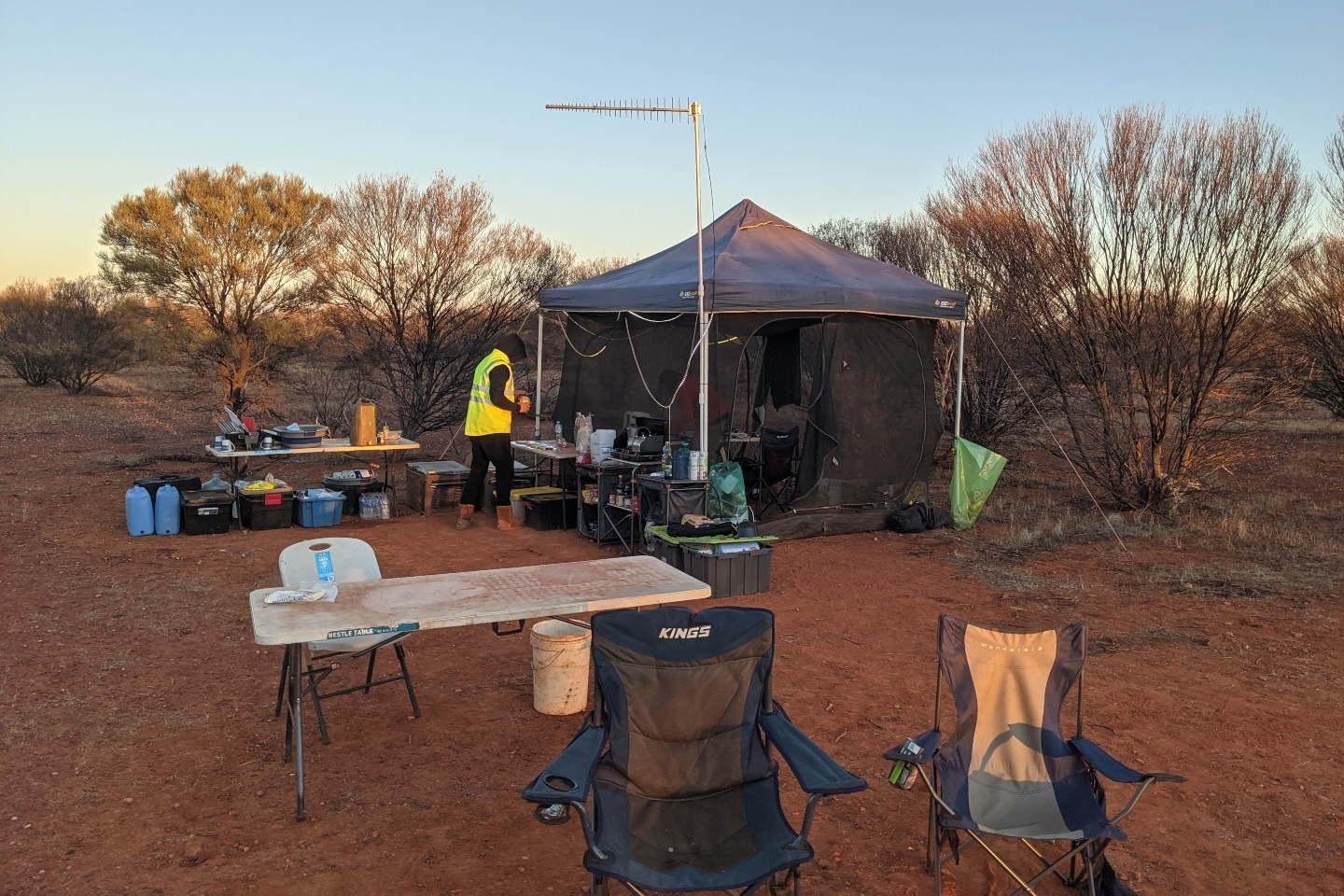After selling the Millrose gold project for $61 million last year, Strickland Metals says its latest gold drill hits at its Celia South prospect out in the WA desert show geological potential for a similar operation. The company says results from maiden reconnaissance air-core drilling at the Warburton Mineral Field site include grades of up to 8.6 grams per tonne gold.

After selling the Millrose gold project for $61 million last year, Strickland Metals says its latest gold drill hits at its Celia South prospect out in the Western Australian desert show geological potential for a similar operation.
Management says results from maiden reconnaissance air-core (AC) drilling at the Warburton Mineral Field site include grades of up to 8.6 grams per tonne gold. It comes after the Millrose sale to WA mining giant Northern Star Resources, in a deal where it picked up 1.5 million fully-paid ordinary shares in that company to retain exposure to the project.
And the cashed-up company has wasted little time in spending some of its new-found wealth, pushing its capacity to undertake aggressive exploration throughout key areas of its Yandal project and nailing a string of successes across multiple targets.
Strickland Metals chief executive officer Andrew Bray said: “Air-core drilling at Celia South intersected gold, confirming the structure as having strong potential to host further strong gold mineralisation. Of greater significance is that gold was intersected in an analogous position to that of Millrose (that is, on the BIF-mafic schist contact) and about 35km along strike from Millrose on the same regional structure.”
In a move away from the company’s recent reconnaissance and follow-up drilling at multiple targets on or related to the same major shear structure about 20km to the north around its Horse Well and Great Western areas, Strickland decided to expand its reconnaissance AC drilling program to have a gander at some new likely target areas along the shear.
The Celia South prospect, which lies about 40km north of the Millrose mineralisation, is one of the early cabs off the rank. The program that helped define the new 1.4km-long Celia South gold mineralised trend included one hole that intersected 3m at 5.6g/t gold from 102m including 1m going 8.6g/t gold from 103m. A second hole on the same line and only 50m away from the first intersected 12m at 0.9g/t gold from 88m including 1m at 1.3g/t gold from 99m to end-of-hole.
Management says it is encouraged by its first-pass drilling results at Celia South, mainly because of the close similarity of its more than 1km-long mineralised banded-iron formation/mafic schist contact to its old familiar Millrose setting, It lies directly along strike from Millrose and on the same regional structure.
The Celia South target selection was at least partly driven by Strickland’s belief that multiple Millrose “lookalike” targets could exist along the more than 65km strike of the regional-scale shear structure that transects its entire Yandal project tenement area from north to south. That belief appears to have been vindicated by the latest discovery, especially with its old – and now expanded – Millrose venture sitting just 10km outside its southern boundary.
In 2021, Strickland picked up Millrose and its indicated and inferred mineral resource estimate of six million tonnes at an average grade of 1.8g/t gold for 346,000 ounces of contained gold.
Early last year, armed with assays from its late 2022 drilling, the company then identified a new mineralised structure at Millrose that pointed to a second potentially high-grade body about 200m west of the main deposit. It says it is open to both the north and south and is traceable using geophysics data in an area of about 5km.
Assay highlights from the new Millrose West include 19m at a grade of 2.9g/t gold from 76m including 5m at a healthy grade of 8.7g/t gold from 89m, while a second hole bored its way through 13m going 2.1g/t gold from 83m.
Meanwhile, in other work at Great Western in the northernmost quarter of the Yandal project, Strickland says maiden drilling of 15 RC holes to test a strong magnetic bullseye with coincident chargeability and strong pathfinder surface geochemistry – including gold – intercepted a distinct felsic intrusive unit within a sequence of mafic-intermediate meta-volcaniclastics.
They were the first holes drilled at the prospect.
The company says the geochemical results include peaks of 865 parts per million bismuth, 682ppm molybdenum and 317ppm tungsten, highlighting a strong intrusive signature and suggesting the prospect could have significant potential for intrusive-related hydrothermal gold mineralisation.
Bray said the main intrusive feature about 200m below surface was now a high priority for diamond drilling planned to launch in April. He believed the presence of surface expression of gold in rock chips reading up to 1.6g/t confirm a gold system is present.
It might seem like Strickland has been talking to a fellow from Greek mythology named Midas, popularly remembered because everything he touched turned to gold. That is often interpreted as luck, but with this company, it looks more a knack for picking good ground with at least one major structure, lots of cross-faults, a suite of chemically-reactive rock types and one or more intrusive bodies running the heat-engines, driving regional stresses and the structural mechanics and attending to the plumbing.
But all of the foregoing would be useless were it not for good geology, good funding and dogged persistence.
Is your ASX-listed company doing something interesting? Contact: matt.birney@businessnews.com.au

















